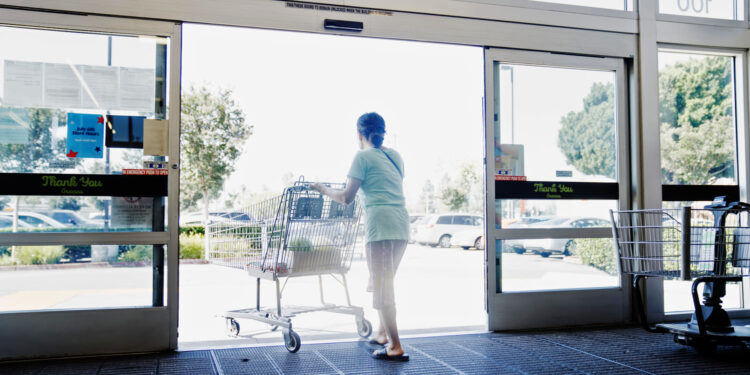
Amid signs of a weakening labor market, the Federal Reserve now finds itself in a bind: If it cuts interest rates too soon, it could risk reigniting the price increases that have bedeviled the post-pandemic economy. But if it keeps rates elevated, the job security of millions of Americans could be further jeopardized.
The Consumer Price Index for the month of June, due to be released by the Bureau of Labor Statistics this morning at 8:30 a.m., is expected to offer further insight into the Fed’s potential next moves.
The unemployment rate now stands at 4.1%, its highest point of the post-pandemic period and a level not seen since February 2018, excluding the coronavirus unemployment surge in 2020.
While experts say a recession is not inevitable, there is growing concern about the unemployment rate having climbed for three months in a row.
“The labor market is experiencing a non-recessionary cooling (as it has been since the spring of 2022),” Guy Berger, director of economic research at the Burning Glass Institute, a research group focused on economic mobility, wrote last week in a Substack note.
“We’re not at the tipping point into recession yet, but I don’t have a lot of confidence about the distance from that tipping point.”
The Federal Reserve is attuned to the risk. In remarks to Congress this week, Fed Chair Jerome Powell said cutting rates “too late or too little could unduly weaken economic activity and employment.”
Yet he also indicated that the central bank still wants to see more progress on inflation before it makes a change to interest rates, saying it was looking for “more good data.”
The Federal Reserve uses interest rates as a brake on economic growth, and thus inflation. Currently, the central bank’s federal funds rate stands at about 5.5% — the highest it’s been since before the 2008 financial crisis. By keeping rates elevated, the Fed has sought to cool overall demand for borrowing for goods and services and thereby slowing overall price increases.
The higher rates have largely worked: After annual inflation peaked at more than 9% in the summer of 2022, that number has fallen to about 3%. But it’s now been stuck there for more than a year, sitting just above the Fed’s 2% inflation target.
In his remarks to Congress this week, Powell said that in fact there continued to be “modest” progress toward the 2% goal.
More importantly, he said, inflation expectations remain “anchored” — meaning there is not an expectation that price growth will reaccelerate.
A big reason for that, economists say, is that many consumers are now in a more precarious financial position than they were in the initial post-pandemic period.
While that’s bad news for overall economic growth, it means price growth will likely continue to slow.
“Increasingly cost-conscious consumers are also likely to limit the extent of price increases across the service sector, while slower growth in input costs, including labor, is reducing the need to do so,” wrote Wells Fargo economist Sarah House in a note this week in advance of Thursday’s report.
While many experts agree that economic growth is cooling, there remains debate about the path ahead. Bank of America economists said in a note this week that they foresee a “gilded glidepath” that leaves the economy in solid shape. On the other hand, Pantheon Macroeconomics chief economist Ian Shepherdson believes the Fed has already waited too long to cut interest rates, writing in a note that it “soon will be rushing to stop a major downturn.”
Whatever the outcome, the economic growth cycle is working against President Joe Biden’s re-election chances. Even if inflation is slowing, rising unemployment has historically cost presidents a second term. And the approximately 20% run-up in inflation that’s occurred since Biden took office — whether directly his fault or not — is likely to linger in voters’ minds.







